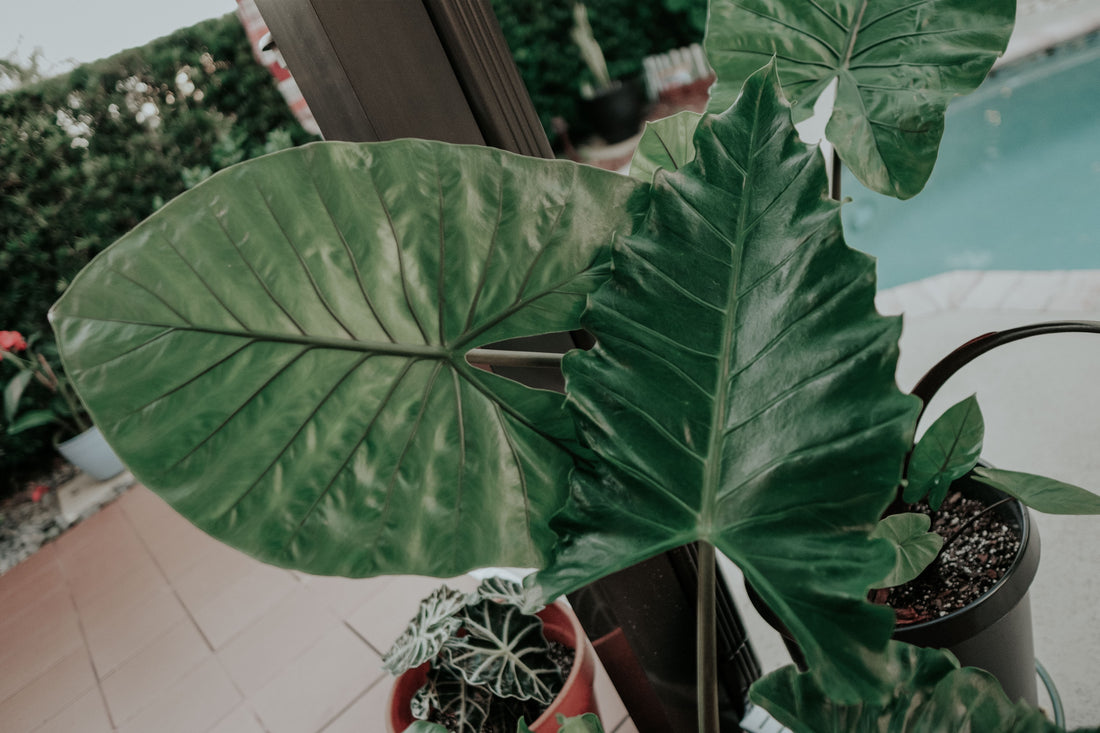How to keep it happy
These plants do great in bright indirect light or a mix of bright indirect with a few hours of direct each day.
Soil moisture and humidity are the key to success with your alocasia. You want to keep the soil slightly moist, but never soggy. When you water, be sure to water thoroughly and allow your plant to drain completely so that it never sits in standing water. This will lead to root rot very quickly, so drainage is a must.
Alocasia are prone to spider mites if they're in a low humidity situation. Ideally, you will want to have a humidifier nearby, but daily misting can also be beneficial. Mist to increase the humidity of the area, but not to soak the foliage.
You may find that some alocasia are moodier about water than others, depending on your water situation at home -- well, city, treated, etc. You can leave your tap water to sit overnight, collect rainwater, or opt for bottled.
When a new leaf appears on your alocasia, don't be surprised if the oldest leaf on the plant starts to turn yellow and fade away. If you're still getting new growth and it's just the older leaf that is dying back, don't panic -- it is very typical of alocasia to keep only a handful leaves at a time when kept indoors, unless they have fantastic sunlight. If your plant is growing and showing no other signs of stress, allow the older leaf to fade away and peel it off when the time comes.
In the warmer months, you can keep your alocasia right outside. If they are in direct light, expect some leaf loss as it begins to grow new foliage for the sun it is getting -- and again, when you bring it inside for the colder months, expect some leaves to say goodbye as it readjusts. Just be sure to keep the humidity high around these plants year round.
Also called
Elephant ear plant, African mask plant
Pet safety
This plant is toxic to cats and dogs.
Fun fact
Alocasia do great outside during the summer months. Move it outside slowly to ensure your plant has time to get used to being in more sunlight, aiming for partial shade outdoors.
Troubleshooting your plant
Spider mites or other pests = needs humidity to be higher (stressed plants attract pests)
Weak stems that seem floppy = needs more sunlight


